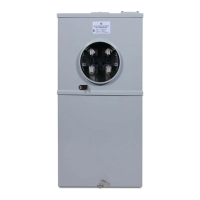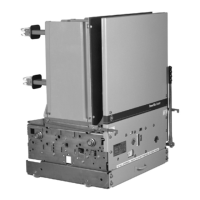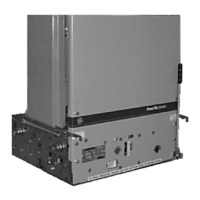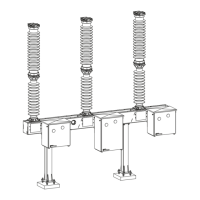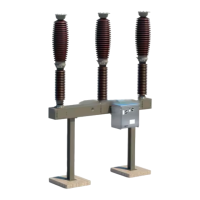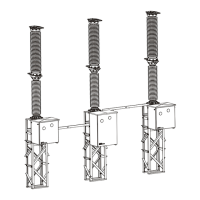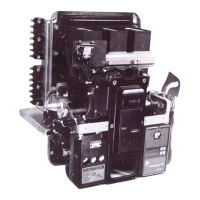S47183-e 01/2008 Design and specifications are subject to change without notice 5
2.2 Installation
2.2.1 Operational environment
• The breaker, as delivered, is IP00 protected. It is intended
to work in indoor applications, without pollutions, with
non-conductive dust, protected against high humidity
and condensation. Low conductivity dust deposit due to
frequent condensation of humidity is acceptable. Gen-
eral environmental conditions refer to EN 50123-1 - an-
nex B, and IEC60947, class PD3.
• The breaker can operate within ambient temperature
range of –5°C…+40°C (23...104°F). With decreased nomi-
nal current, breaker can operate up to +60°C (140°F).
• The breaker can operate at altitude up to 2000m
(~6500ft).
• The breaker shall not be subjected to strong vibrations.
Vibrations of 0.5g per 30sec in vertical and horizontal di-
rections are allowed.
• Air shall be clean and its relative humidity shall be not
more than 50 % r.h. at the maximum temperature of
+40°C (104°F). Relative humidity may be higher if the
temperatures are lower, for example, 90 %r.h. at +20°C
(68°F). Slight condensation might occur during variations
of temperature
2.2.2 Installation and interfaces
• The lower and upper connections (code nr: 4) must be
connected directly to the main cables or bus bars. The
breaker must only be used in an upright operation po-
sition with the arc chute in place and fully secured.
• After installation, both the arc chute and special
threaded joints must be checked for tightness.
• The safety distances as shown in the dimensional draw-
ings must be maintained to grounded or insulated parts.
Suitable measures must be taken to protect personnel
from arcs.
• Strong, external magnetic fields, caused by improperly
located supply conductors or tray fields from other de-
vices, can lead to a shift of the trip setting thresholds.
This may result in premature tripping, or no tripping at
al, during low-level short circuit current events. This has
to be accounted for when installing and operating the
device with shielding added if appropriate.
• The control wires must be connected to the control ter-
minals (code nr: 19), as shown in the schematic circuit
diagram (Page 14). The protective grounding wire must
be connected at the marked contact.
2.3 Usage
2.3.1 Supply and load
• In accordance with its type, the breaker has been de-
signed for the current and voltage listed in Table 1, sec-
tion 3.3.
• During cont
inuous operation, breaker must be loaded
with its rated current at maximum. Load currents in ex-
cess of breaker nameplate rating are al
periods. Refer to the short time currents listed in
1a/1b.
• Do not exceed the rated operating volt
breaker’s nameplate.
•
The drive and the auxiliary tripping devices (code nr: 8).
shall be supply within the specified control voltage
range. The auxiliary-
tripping devices must be loaded
with the values listed in Table 2a at maximum.
• Plugging or removing the auxiliary current con
are only allowed at zero potential, no voltage (-
:1/:2) (-X3 :4/:5) !
2.3.2 Adjusting the OCT
• OCT is an over-
current tripping device (code nr: 7), which
trips a breaker in case of overload or short circu
fully adjustable, instantaneous and direct tripping de-
vice.
• OCT adjustment [Fig.3], within a specific range, is real-
ized by turning the screw 1.
•
Adjusting procedure requires an SW6 hexagon wrench
2.
• The adjustment must only be carried out after
breaker has been disconnected from the main circuit
and has been grounded.
•
Turning the adjustment screw clockwise increased the
trip threshold, turning the screw counter-clockwise de-
creased the tripping threshold.
• Aligning the arrow and the marking into one line 3 per-
forms adjustment.

